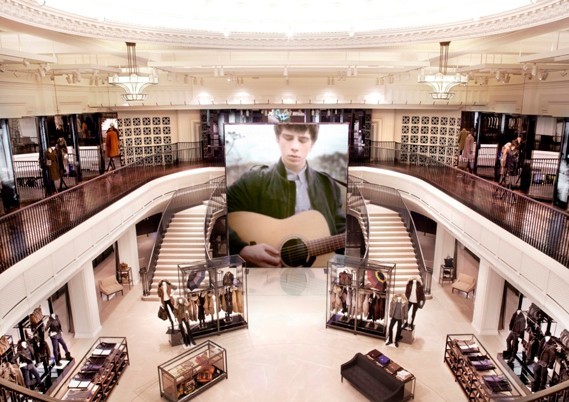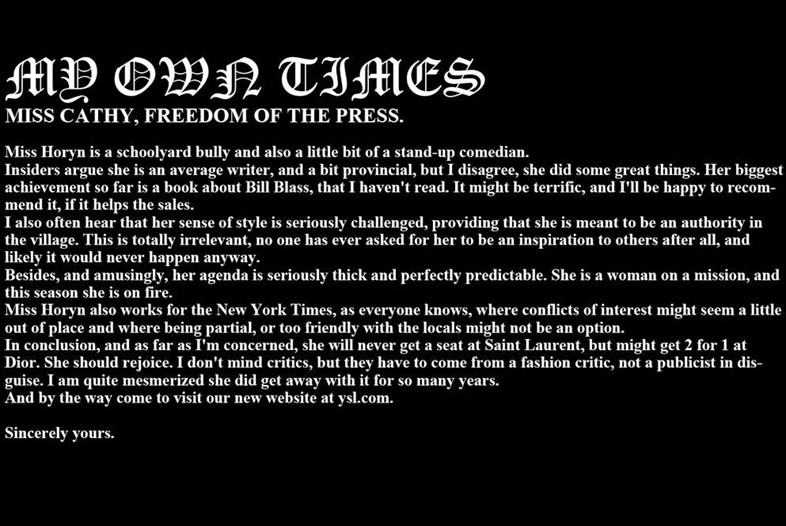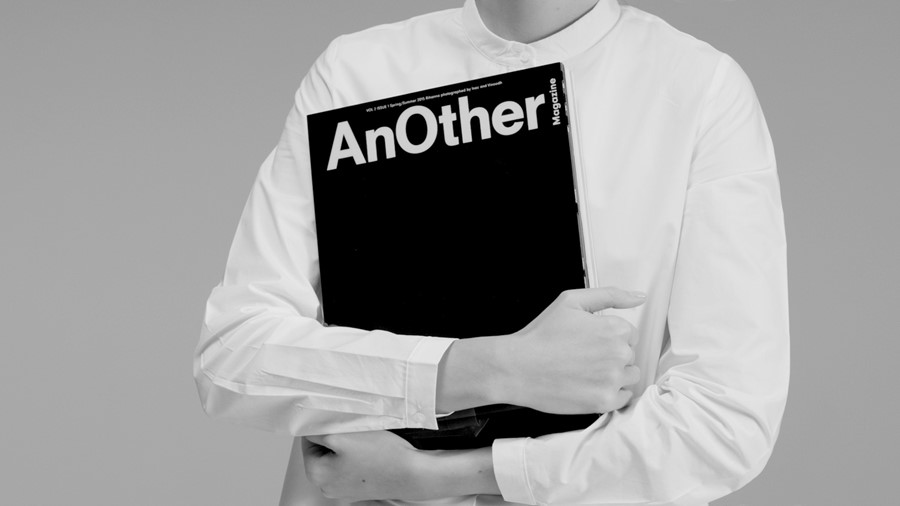We examine the ten standout moments where fashion and tech collided
The world of tech has undoubtedly and irrevocably changed the world of fashion. An industry that once depended on print features to share new collections now relies on social media and live-streamed shows to sustain consumer engagement. Some designers are delighted to embrace the phenomenon: Versace declared #GREEK the future of the brand and, for A/W15, Topshop's partnered with Twitter to enable consumers to shop trends as they appeared on the runway. Dior set their backstage up like a photoshoot, with optimum lighting for photographers.
Some brands are showing a little resilience: Céline forbids even iPhone photography from their showroom and still doesn't retail online, with CEO Marco Gobbetti explaining to the Wall Street Journal, "I feel fashion has overcrowded and has made a lot of noise on the Internet, I think that being quiet gives more value to what we do." But whatever your opinion on the impact of it all: good, bad, exhausting or engaging, it's definitely happening. We take a look back over some of the moments that have got us here, from Plato's Atlantis to our very own Digital Limited Edition.
Alexander McQueen, Plato’s Atlantis, S/S10
A pioneer of fashion innovation in every regard, Alexander McQueen was the first designer to live-stream a show online. For his Plato's Atlantis S/S10 collection, he collaborated with Nick Knight, SHOWstudio and production maestros Gainsbury & Whiting to open up what was once an industry-exclusive experience to the general public (until copious demand actually crashed the website). The whole spectacle was summed up by Suzy Menkes in the Internatonal Herald Tribune as "the most dramatic revolution in twenty-first-century fashion."

Burberry's Regent Street Store, 2012
When Burberry opened their largest ever store on London's Regent Street in 2012, it was amidst a flurry of press provoked by its tech-heavy offerings. Apparently designed as a physical manifestation of their website, Christopher Bailey declared the space "future-proof" and installed 100 screens (including the largest ever inside a retail space) alongside 500 speakers to offer an immersive Burberry experience. In addition, RFID chips were woven into garments to trigger personalised multimedia content throughout the store when you picked up or tried on items of clothing.

Cathy Horyn and Hedi Slimane's Twitter Feud, 2012
In 2012, Hedi Slimane snubbed Cathy Horyn by refusing to extend her an invite to the S/S13 Saint Laurent show, his debut as Creative Director for the brand. She reviewed the show anyway for the New York Times, explaining that "I was not invited. Despite positive reviews of his early YSL and Dior collections, as well as a profile, Mr. Slimane objected bitterly to a review I wrote in 2004." The next day, Slimane posted the above response on his (personal) Twitter account; it was fashion-meets-tech-meets-Jerry Springer. Brilliant.
Iris van Herpen, S/S14
The first designer to show 3D-printed garments on the runway, in 2013 Iris van Herpen managed to engineer a fabric created by pulsed laser that was flexible, durable and (bizarrely) machine washable. Her regular collaborations with Belgian company Materialise NV and her dedication to technological innovation have marked her as one of the industry's most avant-garde creators, and her work with 3D printing has opened up new possibilities across the industry.
Colette Launch of Apple Watch, 2014
When Apple's watch debuted at Colette in September 2014, it was to an audience of fashion's most legendary figures including Anna Wintour, Karl Lagerfeld and Suzy Menkes. Then, in Menkes' Vogue article on its arrival at one of the most fashionable stores in the world, Colette's founder Sarah Andelman announced that "Colette is about l'air du temps - what's in the air. This is going to be part of our fashion lives". Apple certainly know how to curate a guestlist, and the interest that the event generated outside of the tech industry was a serious achievement for a gadget.
Céline and Joan Didion break the internet, Spring 2015
When Céline announced Joan Didion as their Spring campaign star, it was to rapturous re-gramming, tweeting and hashtagging. A woman whose history of elegance epitomises the brand's aesthetic, Céline managed to "go viral" while remaining thoroughly on-brand. As Anothermag.com editor Laura Bradley explained in her analysis of Céline-isms, one of the house's defining points is employing "the element of surprise" and, by appointing an octogenarian as the face of the brand, they surprised us all while challenging plenty of preconceptions about fashion.
AnOther Magazine's Digital Limited Edition S/S15
For S/S15, we launched the very first high-definition, moving magazine cover: The Digital Limited Edition. Uniting the worlds of technology, fashion and music, you could listen to an exclusive soundtrack from John Gosling, watch Inez & Vinoodh's exclusive video of Rihanna and read the S/S15 issue, all in one super-chic publication. An immediate sell-out, it made headlines across the industries – from the Business of Fashion to the Financial Times.
VFiles' User-Generated Fashion Shows
VFiles is not just a retailer; it defines itself as "fashion online social networking – connecting, watching, and shopping." The brand is incredibly proud of championing internet-generation talents and pushing them forward in the industry – in fact, for their New York fashion shows, they exhibit designers who have been selected by the website's team and online community. Fashion democracy at its finest.
The Instagram photo shoot #karllagerfeld @kevin @nicole #chanel
A photo posted by michelgaubert™ (@michelgaubert) on
Karl Lagerfeld meets Instagram's Kevin (by @MicheleGaubert), 2015
Instagram's impact on the fashion industry seems infinite; insta-friendly shows and campaigns are the norm, and there is now a solid industry etiquette that has formed around the @ symbol. Karl Lagerfeld meeting founder Kevin feels like a metaphor for the whole phenomenon – and, documented by Michele Gaubert (previously an industry insider DJ, now with 104k followers and counting), they felt like a tech triumvirate to be reckoned with.
Loewe's Insta-Gang
Jonathan Anderson, Jamie Hawkesworth, Laura Holmes, Benjamin Bruno... some of fashion's most intimidatingly cool people seem to have publicly formed a gang through @s and #s, and with it completely re-branded the historic house Loewe. Since being appointed Creative Director of the historic brand, Anderson brought plenty of his (very chic) friends on board and, through carefully curated feeds (leaking your own campaign images is a big hit for likes), they have established themselves as an online force to be reckoned with.
